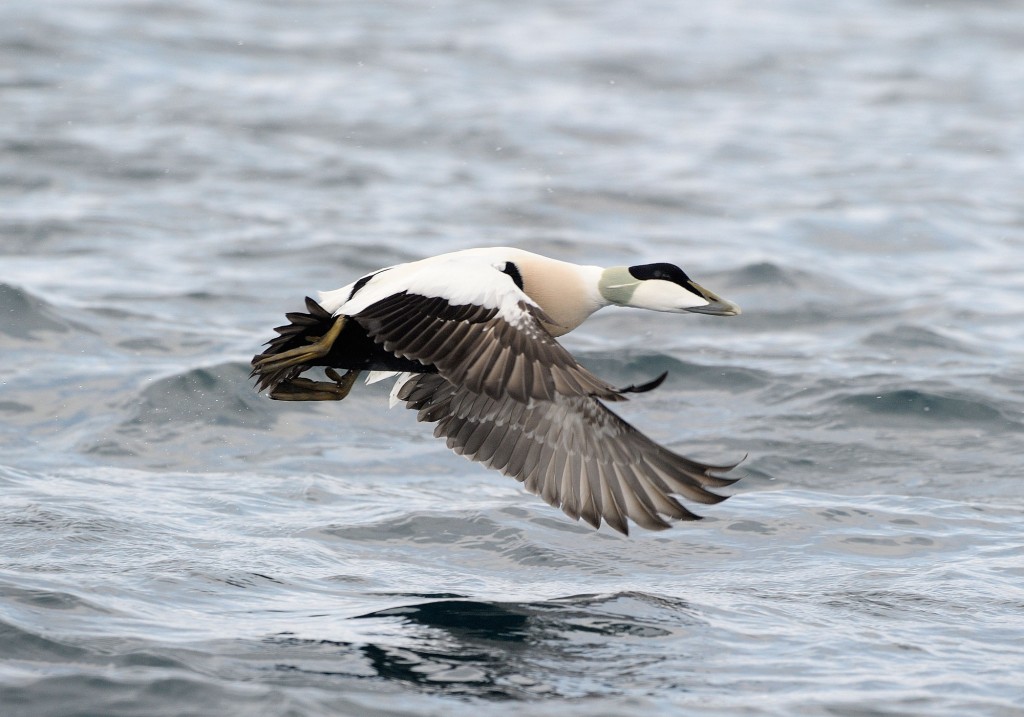Common purpose
The common eider population is dropping in Maritime Canada and New England. Canadian and American biologists are working together to find out why.

In May and June, common eider hens gather on Nova Scotia’s rocky Eastern Shore islands to lay their eggs. Their nests spread over the landscape like downy polka dots, the hens blending into the surrounding patches of granite and short grass.
But something’s happening to these iconic sea ducks: fewer hens are returning to nest on the islands, and no one’s sure why.
That’s why DUC has joined a collaborative research project with Mark Mallory, Acadia University professor and Canada Research Chair for Coastal Wetland Ecosystems, the Nova Scotia Department of Natural Resources (NS DNR), and the Canadian Wildlife Service.
Together, they’re looking at potential threats to these birds (which are one of five priority species being monitored by the Sea Duck Joint Venture), and hope to reveal ways to help the common eider populations of Maritime Canada and New England recover.
“At this point, scientists don’t really have a clear explanation for the declines,” says Mallory. “But as an internationally shared species that’s protected under the Migratory Birds Convention Act, it’s imperative that we determine causes and solutions to the issue, so we can sustainably manage this population.”
Research begins at home
Where do you start when studying a species in decline? Mallory’s team started at home. Based on other biologists’ research and observations made by Eastern Shore fishermen, they suspected that the eider decline corresponded with an increase in the number of predators like mink, otters, ravens and eagles.
Molly Tomlik, a researcher on Mallory’s team, reviewed predator population trends in the area to see if and how they changed through time. The team also set up motion-activated cameras on nest shelters on some of the islands to catch culprits in action.
“The technology is amazing,” says Mallory. “To see an eagle land right at the nest, or a mink running away in the middle of the night. It feels like you’re right there, and offers concrete proof that some of these things [like predation] are happening.”
Tracking the birds
Eider populations aren’t just declining in Nova Scotia, so the research team needed to investigate other potential risks. They enlisted a wildlife veterinarian to implant satellite transmitters on Eastern Shore hens (partly because they’re easier than males to capture). Tracking these hens, the team found out where the birds are stopping as they migrate and where they’re wintering. In August, the birds start leaving Nova Scotia, fly across the Gulf of Maine and stop along the coast to moult on their way to wintering grounds farther south.
This information will make it easier to figure out if the eiders are running into any threats from human activities – like aquaculture developments or off-shore windfarms placed in sea duck foraging areas – on their trip south.
Sharing resources
The research group is also sharing information with biologists in the U.S. to locate key habitat sites in New England that birds might be using. Research partner Randy Milton, a wildlife manager with NS DNR, is using some of the data to discover when birds are present in areas that have Wellfleet Bay virus, a disease infecting huge numbers of eiders in Massachusetts. (Ninety-five per cent of common eiders sampled on the Boston Harbor Islands tested positive for the virus.)
Finding solutions
One of the next steps in this ongoing research project is to implant transponders in male eiders to determine if they’re facing different threats. Finding groups of male eiders is challenging, though, because they don’t gather as predictably in one place for a long time like females do when they’re nesting. Still, Mallory says, “Getting some of those males and figuring out what they do each winter is another important piece to close out this story.”
This spring on the Eastern Shore, hens are building nests and getting ready to lay eggs as they have for eons. The research collaborative hopes outcomes of their work keeps the birds coming back to the islands for years to come.



